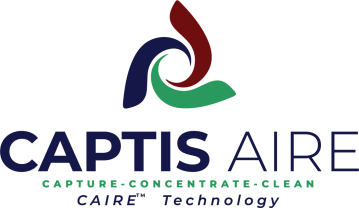
About the CAIRE™ Technology
Fluidized Bed Concentrator
The Fluidized Bed Concentrator (FBC) is advantageously used in industrial applications with a very high volume of process air exhaust and low inlet emissions concentration where traditional oxidizers require significant amounts of natural gas to sustain combustion and electricity to move the exhaust air.
The FBC operates via three main operations: 1) Adsorption, where the emissions are captured with activated carbon; 2) Desorption, where the emissions are heated and released to concentrate the emissions; and 3) Condensation to convert the pollutants to valuable products or Oxidation to efficiently destroy them in concentrated form.
The FBC's efficient adsorption, concentration, and treatment systems significantly reduce energy consumption, GHG emissions, and maintenance costs.
See and hear how the Fluidized Bed Concentrator works in the video.
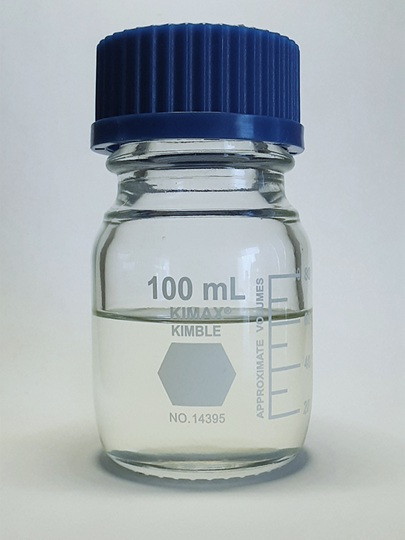
New Product Revenue from
Valuable Organics Recovered
The CAIRE™ technology adsorbs and recovers valuable organics from process exhaust gases treated. These can be recovered and sold for a variety of purposes including for use as renewable fuels, flavors, and fragrances. See organic solvent, turpentine (terpenes) pictured here, recovered from drying green pine wood.
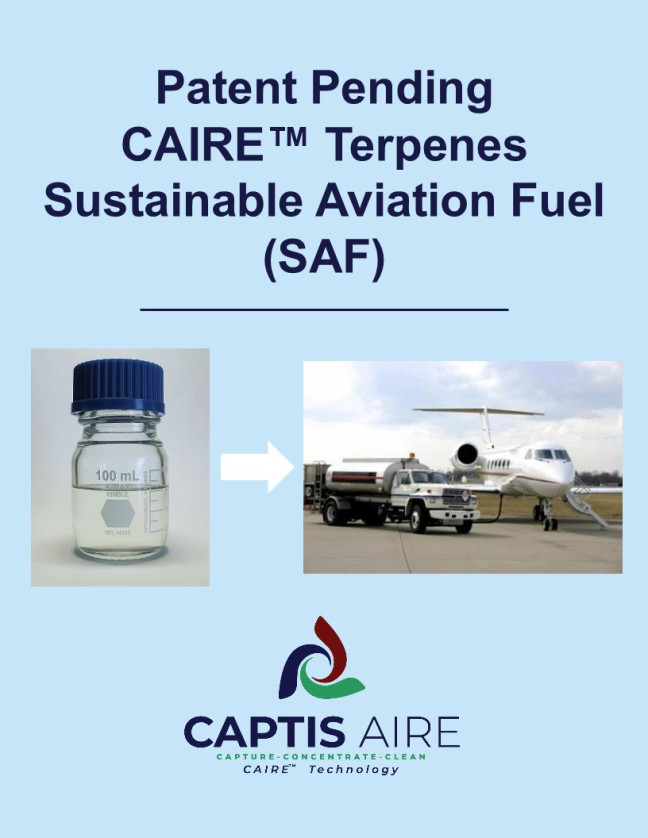
Sustainable Aviation Fuel
Terpenes captured from green pine wood can be used to provide patent pending CAIRE™ Terpenes Sustainable Aviation Fuel (SAF)
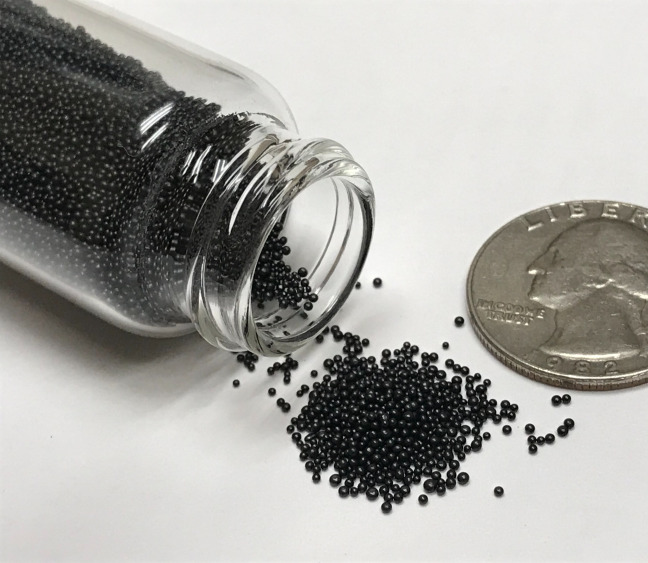
Bead Activated Carbon Adsorbs Emissions
Bead Activated Carbon Efficiently Adsorbs Organics (i.e. Terpenes) from Exhaust Air:
High-fill (adsorption) capacity
Small Particle, <1mm diameter
High flowability
High purity, low dust
High Strength, high wear resistance
Narrow particle size distribution
Two Minute "Pitch" Video
Problem: The problem with emissions control devices is that they oxidize or burn the emissions. This uses a tremendous amount of energy, creates greenhouse gas emissions, and is very expensive to operate!
Solution: The alternative patent pending technology uses activated carbon to very efficiently adsorb and recover those same emissions. Technology has three main equipment components:
Adsorber: Captures emissions by moving process air through trays filled with bead activated carbon.
Desorber: Releases the emissions in a concentrated gas phase by heating the bead activated carbon.
Condenser or Oxidizer: Treats the concentrated gas phase by either recovering or destroying the organics.
Benefits: Reduced Energy Usage, Operational costs, and Greenhouse Gas Emissions.
Benefits: Revenue generation from transforming what would have been pollutants into valuable byproducts.
Benefits: It’s good for industry and it’s good for our air!
Capture and Oxidizer Physical and Operational Comparison Video
Capture System, the Fluidized Bed Concentrator (FBC), Benefits:
-
Operating temperature reduction of over 1000°F in Adsorber vs oxidizer eliminates or reduces total fuel consumption.
-
Differential pressure reduction of 5-15 inches of water across Adsorber due to fluidized rather than static media reduces electricity consumption to move exhaust air.
-
Reduced weight and smaller footprint expands installation site options including rooftop mounting.
Fluidized Bed Concentrator (FBC) Overview Video
FBC Overview:
Technology
Features
Benefits.
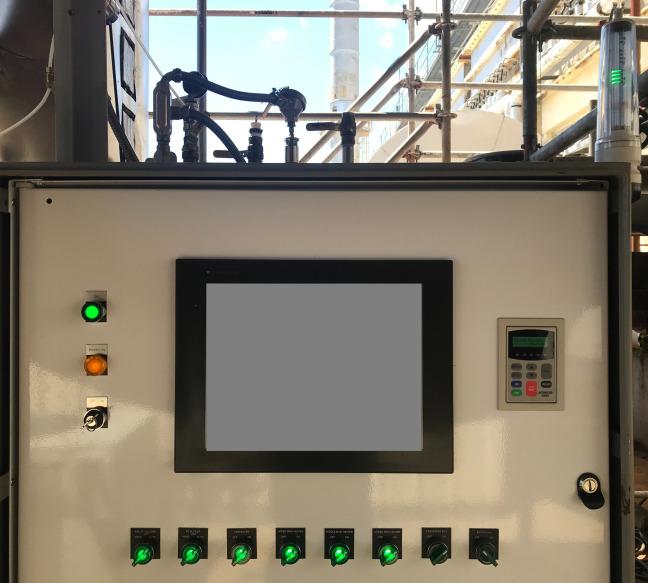
Human Machine Interface (HMI) and Programmable Logic Controller (PLC) System
Onsight or offsite access to data
Instrumentation and control systems enable analysis, measurement, and control of FBC process variables including temperature, pressure, flow, and level sensors.
Operations can be monitored onsight and offsite enabling centralized monitoring and optimization.
Powerful data historian analysis and reporting software is available to put near real-time and historical production details in the hands of operators, engineers, operations managers, and centralized monitoring personnel.
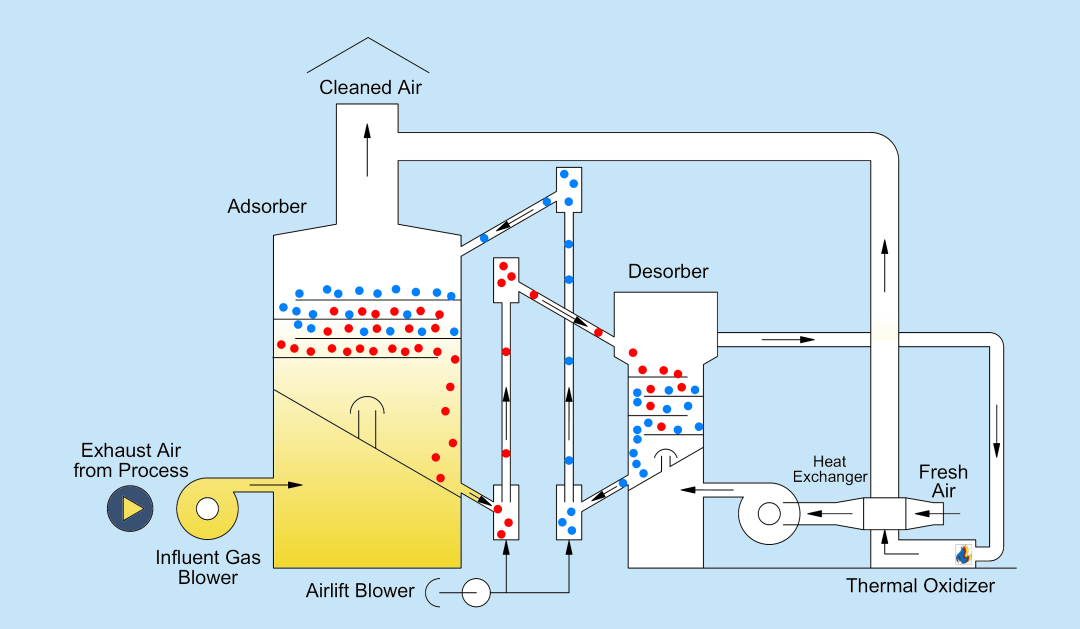
Fluidized Bed Concentrator
Thermal Oxidation Option
Efficient Thermal Oxidation in Concentrated Stream
The Fluidized Bed Concentrator (FBC) Thermal Oxidation system is an option to FBC Recovery where the value of the collected organics is low.
The FBC Oxidation system concentrates the emissions by up to 5,000 to 1, then controls them via oxidation to efficiently destroy them in concentrated form.
Whether using FBC Recovery or Oxidation, the FBC's efficient adsorption, concentration, and treatment systems significantly reduce energy consumption, GHG emissions, and maintenance costs.